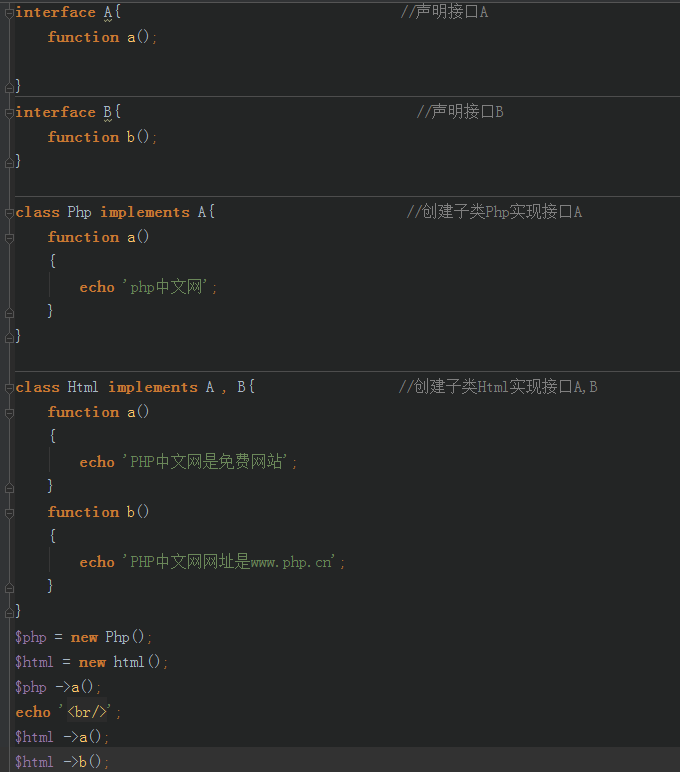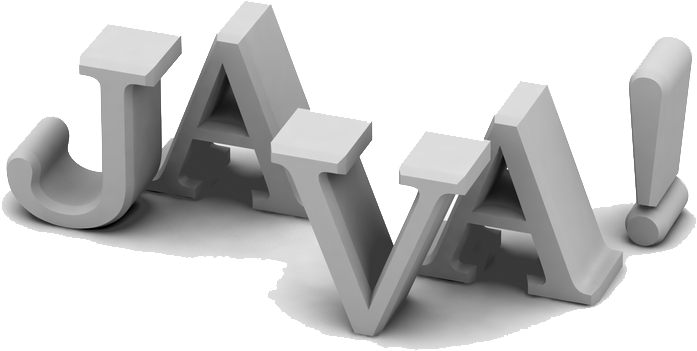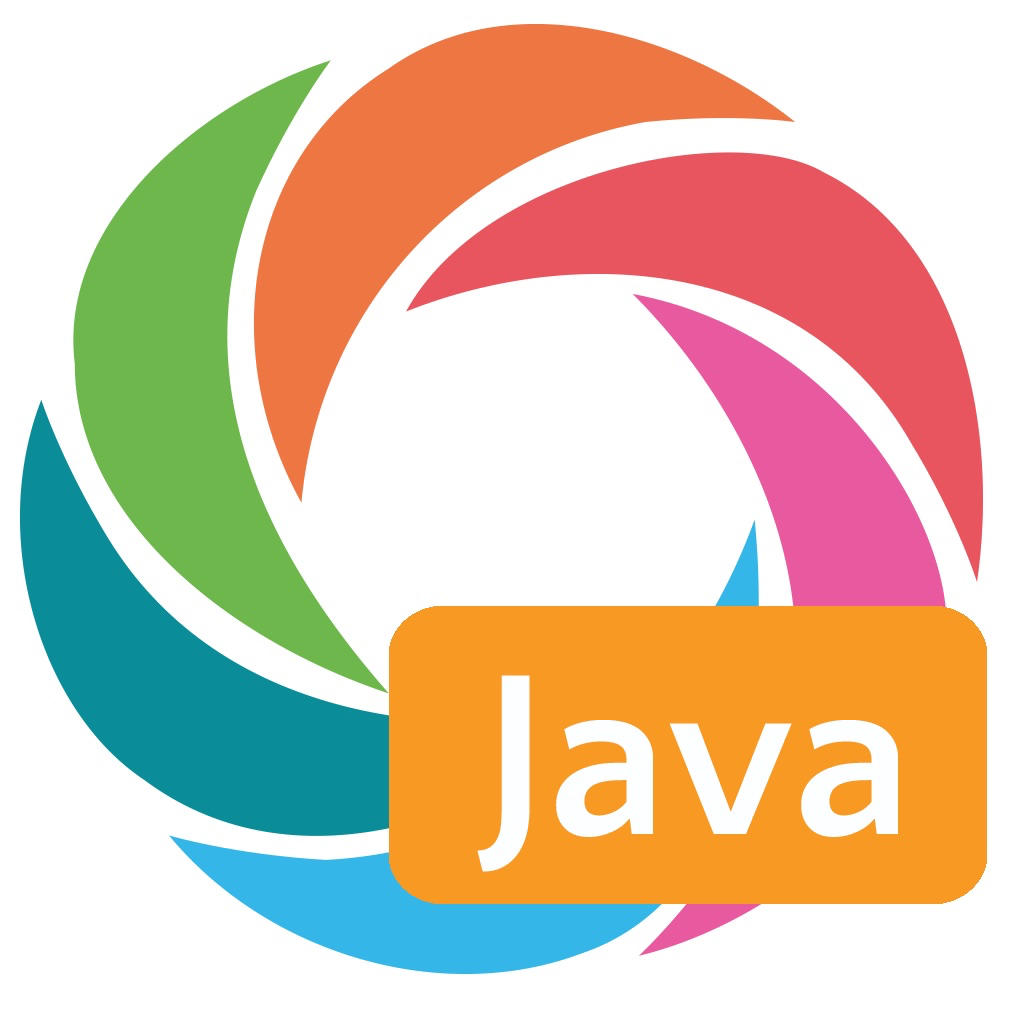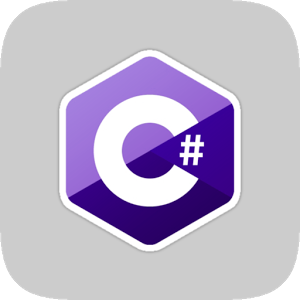10 recommended articles on implementing multiple inheritance
Before introducing the interface, we need to know why we need to use the interface. Here we will introduce it to you. So why use interfaces? Among computer languages, only a few object-oriented ones support multiple inheritance. The PHP language we are learning, like most languages, does not support multiple inheritance. To put it bluntly, a parent class can have multiple subclasses, but a subclass can only have one parent class. What is multiple inheritance? Multiple inheritance is a subclass that inherits two or more parent classes. This is multiple inheritance, which is not allowed in PHP. If we want to implement multiple inheritance in PHP, then we have to use interfaces. Interfaces can be seen as a solution to multiple inheritance. PHP's object-oriented interface is similar to other object-oriented language interfaces. Introduction to the syntax of interface classes: Interface classes are declared through the interface keyword, and the class can only contain unimplemented methods and some member variables. The format is as follows: interface InterfaceName{ function interfaceName1(){ } function interfaceName2(
1. PHP object-oriented multiple inheritance and interface usage

Introduction: Before introducing interfaces, we need to know why we use interfaces. Here we will introduce them to you. Among computer languages, only a few object-oriented languages support multiple inheritance. The PHP language and most languages we learn. Likewise, multiple inheritance is not supported. To put it bluntly, a parent class can have multiple subclasses, but a subclass can only have one parent class. What is multiple inheritance? It is a subclass that inherits two or more parents. Classes are multiple inheritance, which are not allowed in PHP. If we want to implement multiple inheritance in PHP, we must use interfaces. Interfaces can be regarded as the object-oriented method of PHP. The interface is similar to other object-oriented language interfaces
##2. Detailed introduction to Java internal classes

3.
Java Improvement Part 8 -----Realizing Multiple Inheritance

4.
C# Learning Diary 26---Interface Type

5. Programmers share their learning experience about PHP interface_PHP tutorial Introduction: Programmers share their learning experience about PHP interface experience. LieHuo.Net network programming recently encountered difficulties in the process of learning the PHP5 interface. The book says it is a way to implement multiple inheritance, but I still don’t know how to implement it 6. Learning of PHP interface_PHP tutorial Introduction: Learning of PHP interface. Recently, I encountered difficulties in the process of learning the PHP 5 interface (as the current mainstream development language). The book said it is a way to implement multiple inheritance, but I still don't know how to implement it. 7. php multiple inheritance example Introduction: Recently, a friend who is doing PHP development asked a question about Two people talked about the issue of multiple inheritance in PHP for a long time. In fact, they didn’t understand what multiple inheritance is. Today I have some free time, so I deliberately learned about the concept of multiple inheritance in detail, and also talked about how to implement multiple inheritance in PHP. some views. 8. Java software engineers learn PHP -14. Object-oriented Introduction: Java programmers learn PHP - 14. Object-oriented
Similarities: 1. It is also a class + method 2. Multiple inheritance is not allowed 3. There is also an interface, which can be used to implement multiple inheritance 4. There are also abstract classes 5. There are also static methods 6. Extensions can also be prohibited through the final keyword. Differences: 1. The class itself has no access modifier 2. The default access modifier for attributes and methods is public 9. [Transfer] PHP implements multiple inheritance through interfaces Introduction: [Transfer] PHP implements multiple inheritance through interfaces
Although PHP classes are single-inherited, multiple inheritance can be achieved through other special methods, such as using interfaces. As long as the characteristics of the class are abstracted into interfaces, and the object has multiple identities by implementing the interface, it can be simulated Multiple inheritance happened.
The following is an example of using interfaces to simulate multiple inheritance. The source code is as follows:
10. Programmers share their learning experience about PHP interfaces Introduction: Programmers share their learning experience about PHP interfaces. LieHuo.Net network programming recently encountered difficulties in the process of learning the PHP5 interface. The book says it is a way to implement multiple inheritance, but I still don’t know how to implement it [Related Q&A Recommendations]:
The above is the detailed content of 10 recommended articles on implementing multiple inheritance. For more information, please follow other related articles on the PHP Chinese website!

Hot AI Tools

Undresser.AI Undress
AI-powered app for creating realistic nude photos

AI Clothes Remover
Online AI tool for removing clothes from photos.

Undress AI Tool
Undress images for free

Clothoff.io
AI clothes remover

Video Face Swap
Swap faces in any video effortlessly with our completely free AI face swap tool!

Hot Article

Hot Tools

Notepad++7.3.1
Easy-to-use and free code editor

SublimeText3 Chinese version
Chinese version, very easy to use

Zend Studio 13.0.1
Powerful PHP integrated development environment

Dreamweaver CS6
Visual web development tools

SublimeText3 Mac version
God-level code editing software (SublimeText3)

Hot Topics
 1664
1664
 14
14
 1423
1423
 52
52
 1317
1317
 25
25
 1268
1268
 29
29
 1246
1246
 24
24
 PHP and Python: Comparing Two Popular Programming Languages
Apr 14, 2025 am 12:13 AM
PHP and Python: Comparing Two Popular Programming Languages
Apr 14, 2025 am 12:13 AM
PHP and Python each have their own advantages, and choose according to project requirements. 1.PHP is suitable for web development, especially for rapid development and maintenance of websites. 2. Python is suitable for data science, machine learning and artificial intelligence, with concise syntax and suitable for beginners.
 PHP in Action: Real-World Examples and Applications
Apr 14, 2025 am 12:19 AM
PHP in Action: Real-World Examples and Applications
Apr 14, 2025 am 12:19 AM
PHP is widely used in e-commerce, content management systems and API development. 1) E-commerce: used for shopping cart function and payment processing. 2) Content management system: used for dynamic content generation and user management. 3) API development: used for RESTful API development and API security. Through performance optimization and best practices, the efficiency and maintainability of PHP applications are improved.
 Explain secure password hashing in PHP (e.g., password_hash, password_verify). Why not use MD5 or SHA1?
Apr 17, 2025 am 12:06 AM
Explain secure password hashing in PHP (e.g., password_hash, password_verify). Why not use MD5 or SHA1?
Apr 17, 2025 am 12:06 AM
In PHP, password_hash and password_verify functions should be used to implement secure password hashing, and MD5 or SHA1 should not be used. 1) password_hash generates a hash containing salt values to enhance security. 2) Password_verify verify password and ensure security by comparing hash values. 3) MD5 and SHA1 are vulnerable and lack salt values, and are not suitable for modern password security.
 PHP: A Key Language for Web Development
Apr 13, 2025 am 12:08 AM
PHP: A Key Language for Web Development
Apr 13, 2025 am 12:08 AM
PHP is a scripting language widely used on the server side, especially suitable for web development. 1.PHP can embed HTML, process HTTP requests and responses, and supports a variety of databases. 2.PHP is used to generate dynamic web content, process form data, access databases, etc., with strong community support and open source resources. 3. PHP is an interpreted language, and the execution process includes lexical analysis, grammatical analysis, compilation and execution. 4.PHP can be combined with MySQL for advanced applications such as user registration systems. 5. When debugging PHP, you can use functions such as error_reporting() and var_dump(). 6. Optimize PHP code to use caching mechanisms, optimize database queries and use built-in functions. 7
 How does PHP handle file uploads securely?
Apr 10, 2025 am 09:37 AM
How does PHP handle file uploads securely?
Apr 10, 2025 am 09:37 AM
PHP handles file uploads through the $\_FILES variable. The methods to ensure security include: 1. Check upload errors, 2. Verify file type and size, 3. Prevent file overwriting, 4. Move files to a permanent storage location.
 The Enduring Relevance of PHP: Is It Still Alive?
Apr 14, 2025 am 12:12 AM
The Enduring Relevance of PHP: Is It Still Alive?
Apr 14, 2025 am 12:12 AM
PHP is still dynamic and still occupies an important position in the field of modern programming. 1) PHP's simplicity and powerful community support make it widely used in web development; 2) Its flexibility and stability make it outstanding in handling web forms, database operations and file processing; 3) PHP is constantly evolving and optimizing, suitable for beginners and experienced developers.
 How does PHP type hinting work, including scalar types, return types, union types, and nullable types?
Apr 17, 2025 am 12:25 AM
How does PHP type hinting work, including scalar types, return types, union types, and nullable types?
Apr 17, 2025 am 12:25 AM
PHP type prompts to improve code quality and readability. 1) Scalar type tips: Since PHP7.0, basic data types are allowed to be specified in function parameters, such as int, float, etc. 2) Return type prompt: Ensure the consistency of the function return value type. 3) Union type prompt: Since PHP8.0, multiple types are allowed to be specified in function parameters or return values. 4) Nullable type prompt: Allows to include null values and handle functions that may return null values.
 PHP vs. Python: Understanding the Differences
Apr 11, 2025 am 12:15 AM
PHP vs. Python: Understanding the Differences
Apr 11, 2025 am 12:15 AM
PHP and Python each have their own advantages, and the choice should be based on project requirements. 1.PHP is suitable for web development, with simple syntax and high execution efficiency. 2. Python is suitable for data science and machine learning, with concise syntax and rich libraries.




